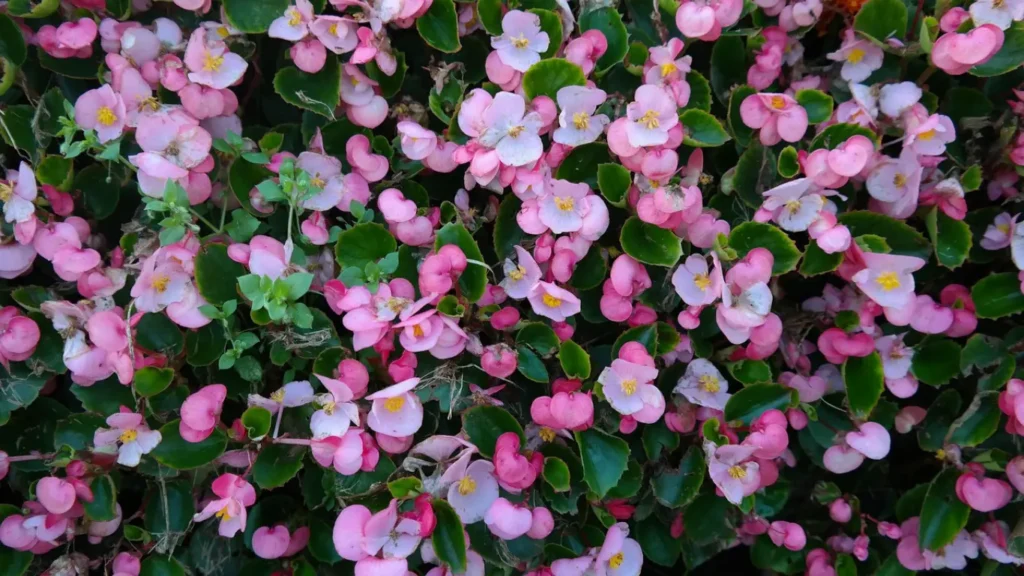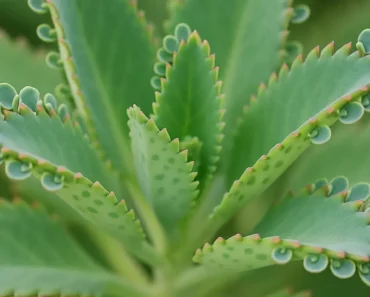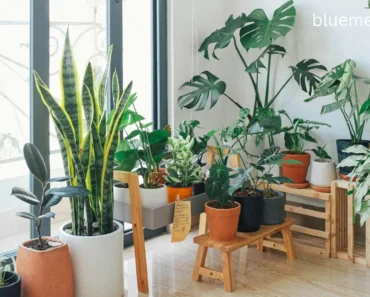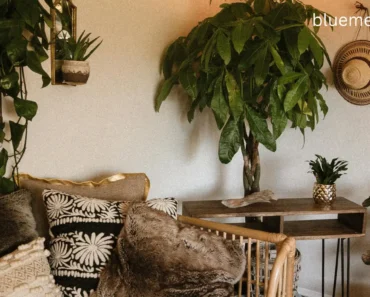
Begonias are popular ornamental plants known for their stunning flowers and unique foliage. With over 1,500 species, begonias offer diverse colours and textures, making them a favourite among gardeners. Whether growing them indoors or outdoors, begonias are perfect for adding vibrant beauty to your space. In this guide, we will explore the best varieties of begonias, how to care for them, and tips for propagating and troubleshooting common issues.
Table of Contents
Understanding Begonias: Botanical Insights
Begonias belong to the Begoniaceae family, with many species and hybrids. Originating from tropical and subtropical regions, primarily in Asia and South America, they thrive in shaded, humid environments. Begonias can be categorized into three main types:
- Tuberous Begonias: Known for their large, colourful flowers, these begonias are often grown in hanging baskets or containers.
- Fibrous-rooted Begonias (Wax Begonias): Compact and easy to care for, these begonias are ideal for bedding plants.
- Rhizomatous Begonias: Famous for their striking foliage and often grown indoors.
These plants adapt well to different climates, with some species surviving in colder areas while others require a warmer, more humid environment. For more on begonias and how they grow, refer to Almanac.com’s guide.
Popular Begonia Varieties
Choosing the right begonia variety is key to creating beautiful, low-maintenance displays. Here are some of the best varieties to consider in 2024:
- Tuberous Begonias:
- Features: Large, showy flowers in various colours, including reds, pinks, and whites.
- Best Use: Ideal for containers, hanging baskets, or garden focal points.
- Care Tips: These begonias require well-draining soil and protection from frost.
- Learn more at Gardener’s World’s begonia care guide.
- Wax Begonias:
- Features: Smaller flowers and glossy, dark green leaves.
- Best Use: These begonias thrive in both sun and partial shade, making them perfect for indoor and outdoor spaces.
- Care Tips: Wax begonias are low maintenance and need regular watering to moisten the soil.
- Rex Begonias:
- Features: Known for their incredible foliage, Rex begonias have patterned, metallic leaves in colours ranging from silver to deep red.
- Best Use: Typically grown indoors due to their need for warmer temperatures and higher humidity.
- Care Tips: Keep them humid and avoid direct sunlight, which can scorch the leaves.
- Angel Wing Begonias:
- Features: Large, wing-shaped leaves and elegant flowers that hang delicately from the plant.
- Best Use: Perfect for hanging baskets or containers, adding height and charm.
- Care Tips: Angel wing begonias prefer indirect light and need well-drained soil.
Check out The Spruce’s begonia variety guide for more information on different begonias and their uses.
Ideal Growing Conditions for Begonias
Begonias thrive in specific conditions that cater to their native environments. Here’s what you need to know to ensure your begonias flourish:
- Light Requirements:
- Shade-loving: Most begonias prefer indirect sunlight or partial shade.
- Exceptions: Some varieties, such as wax begonias, can tolerate full sun, but they still require protection during the hottest part of the day.
- Temperature Preferences:
- Optimal Range: Most begonias grow best in temperatures between 60°F (15°C) and 75°F (24°C). These plants should not be exposed to frost.
- Cold Sensitivity: Begonias are sensitive to cold, so keep them indoors during winter or in areas protected from frost.
- Soil Conditions:
- Drainage: Begonias need well-drained, slightly acidic soil to avoid root rot.
- Soil Type: Use a mix designed for begonias or general-purpose potting soil enriched with organic matter.
- Humidity Needs:
- Indoor Care: Begonias are tropical plants and require high humidity to thrive indoors. You can maintain the proper humidity levels by using a humidifier or placing the plant in a group with other humidity-loving plants.
- Outdoor Care: When growing begonias outside, consider grouping them to create a microclimate with higher humidity.
For more information on growing conditions and best practices, visit Almanac.com’s increasing guide of begonias.
Begonia Care and Maintenance
Caring for begonias involves key steps to ensure they grow healthy and vibrant. Here are some tips for keeping your plants in top shape:
- Watering:
- Frequency: Water begonias regularly, but allow the soil to dry slightly between waterings to prevent overwatering.
- Method: Water the base of the plant rather than wetting the foliage, which can cause fungal diseases.
- Fertilization:
- Type: Use a balanced, water-soluble fertilizer. A 10-10-10 fertilizer is ideal.
- Schedule: Feed begonias every 2 to 4 weeks during the growing season, from spring to fall.
- Pruning and Deadheading:
- Purpose: Remove dead flowers to encourage new growth and improve the plant’s appearance.
- Technique: Trim any leggy stems or damaged leaves to maintain a tidy shape.
- Pest and Disease Management:
- Common Pests: Watch for aphids, mealybugs, and spider mites.
- Prevention: Avoid overhead watering and maintain good air circulation around the plant. Use organic pesticides if needed.
Check out Gardener’s World’s begonia care instructions for more detailed maintenance tips.
Troubleshooting Common Begonia Issues
Even with the best care, begonias can encounter problems. Here’s how to troubleshoot some common issues:
- Yellowing Leaves:
- Causes: Overwatering, nutrient deficiencies, or pests.
- Solutions: Adjust watering practices and check for pests. If the issue persists, use a balanced fertilizer.
- Wilting Despite Moist Soil:
- Causes: Root rot due to poor drainage.
- Solutions: Ensure the pot has drainage holes and repot the plant in fresh, well-draining soil.
- Poor Flowering:
- Causes: Insufficient light or lack of nutrients.
- Solutions: Move the plant to a sunnier spot and feed it regularly.
For more troubleshooting information, refer to RHS Gardening’s Begonia troubleshooting guide.
Frequently Asked Questions about Begonias
- Q1: What are the best begonias for low light?
- A1: Rex begonias and angel wing begonias thrive in low light conditions.
- Q2: Can begonias be grown indoors year-round?
- A2: Yes, begonias can be grown indoors year-round in containers or hanging baskets.
- Q3: Are begonias toxic to pets?
- A3: Yes, begonias are toxic to pets, especially cats and dogs, if ingested.
- Q4: How can I make my begonias bloom more?
- A4: Ensure they get adequate light, remove dead flowers regularly, and provide consistent moisture and nutrients.
- Q5: How do I propagate begonias?
- A5: You can propagate begonias from leaf or stem cuttings in water or a moist soil mix.
Conclusion: Add Begonias to Your Garden
Begonias are an excellent addition to any garden, whether indoors or outdoors. Their vibrant flowers and stunning foliage make them perfect for containers, hanging baskets, and bedding. You can enjoy these beautiful plants year-round by understanding their care needs and troubleshooting common issues.
Start growing your begonias today and enjoy their elegance and charm throughout the seasons!
Author
George Wine is a seasoned gardening expert with over 20 years of experience in the field of horticulture. His passion for plants and nature has driven his career, where he has honed his skills in various aspects of gardening, from landscape design to plant care. George holds a Master of Science in Horticulture from the University of California, Davis (UC Davis), a prestigious institution known for its research and advancements in plant science.
Throughout his career, George has worked with a diverse range of clients, offering tailored solutions to enhance outdoor spaces and create thriving gardens. His knowledge and expertise allow him to provide invaluable advice, ensuring that both novice and experienced gardeners achieve their gardening goals. Whether you’re looking for tips on sustainable gardening practices, innovative design ideas, or advice on specific plant species, George is here to help you cultivate the garden of your dreams.






